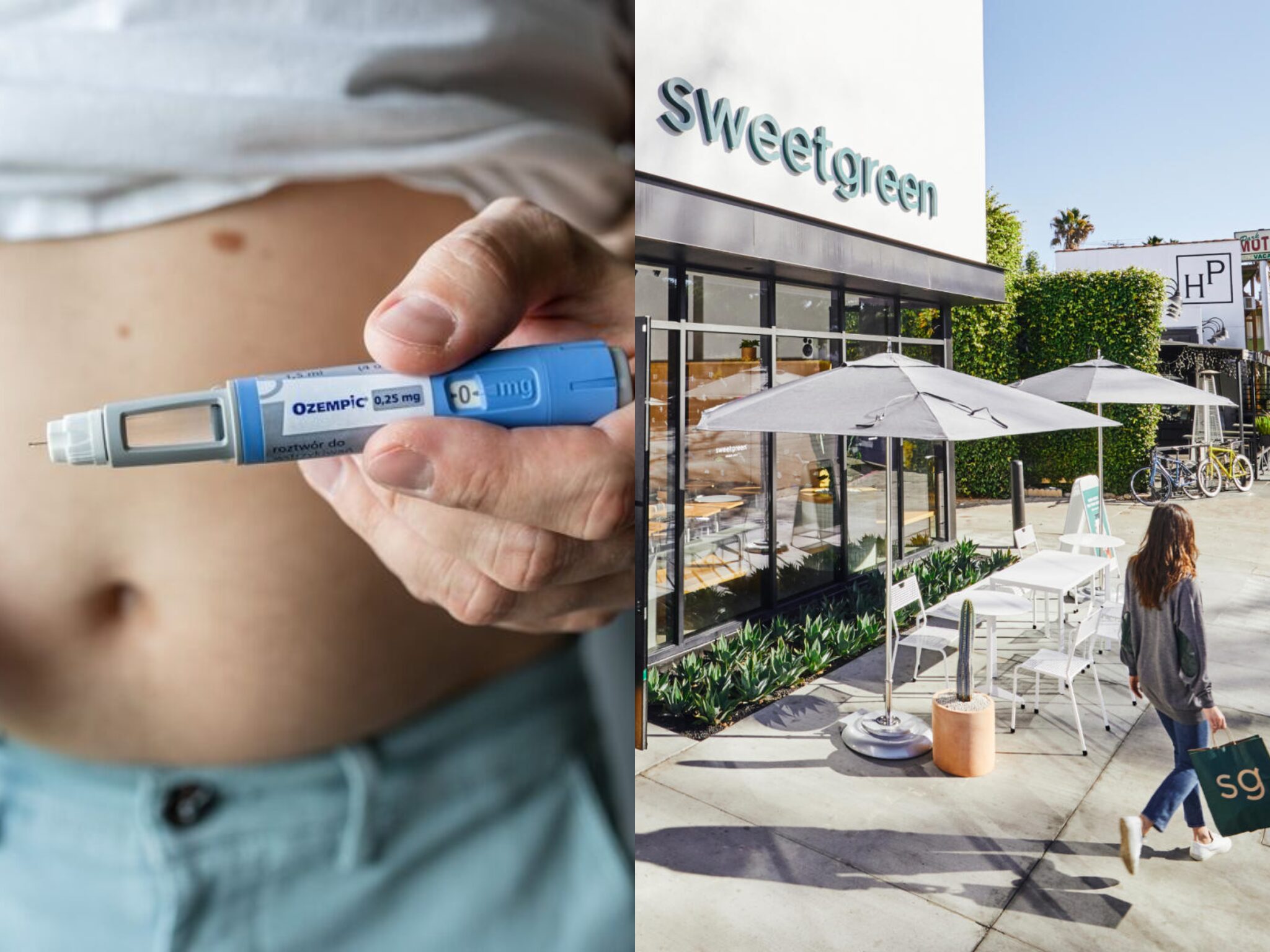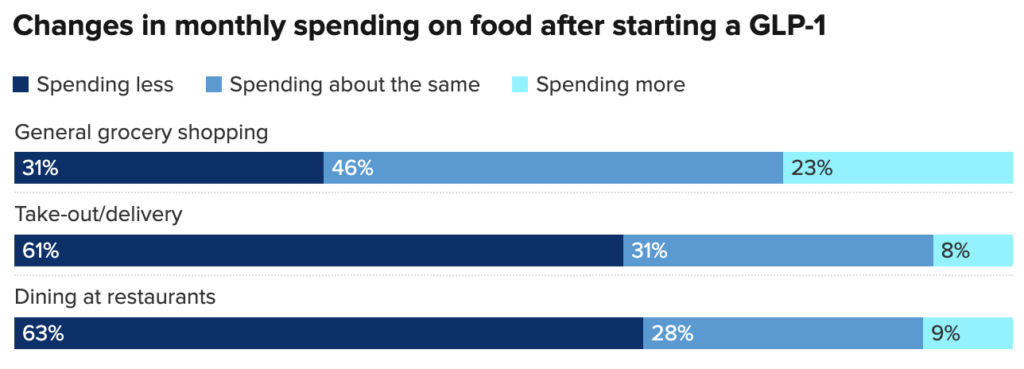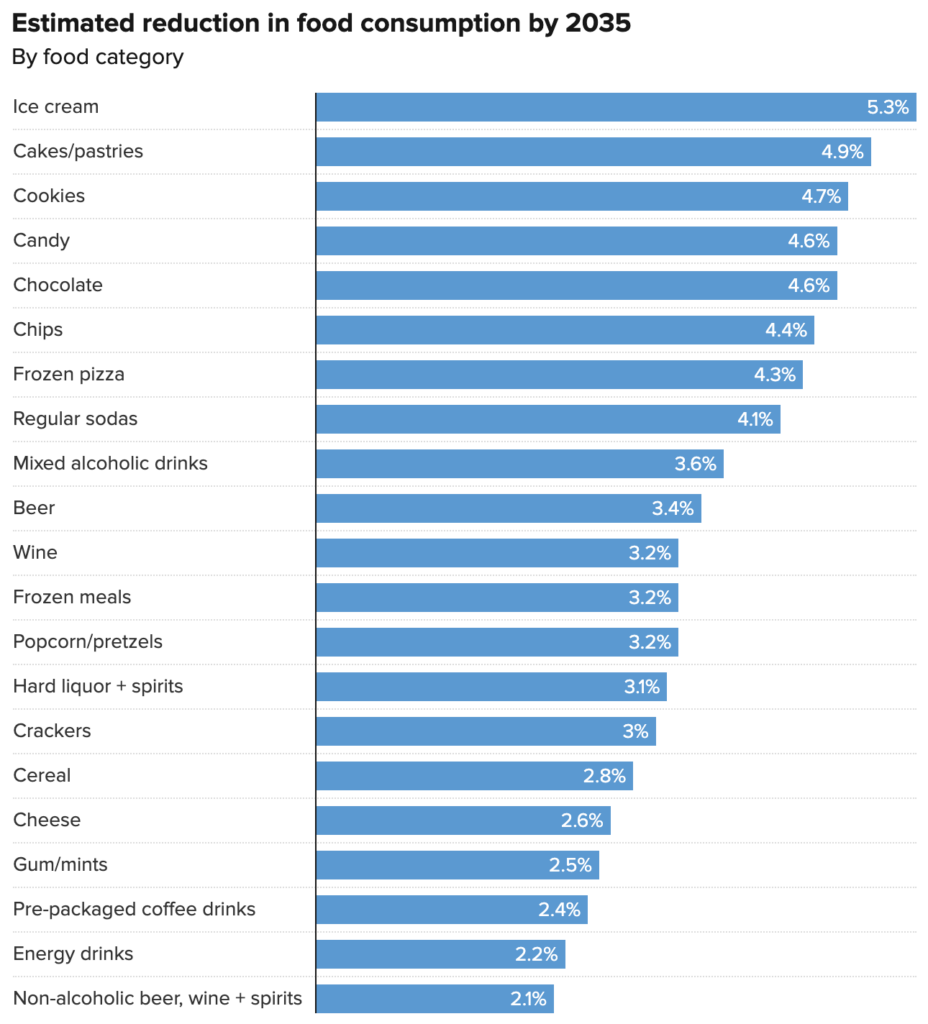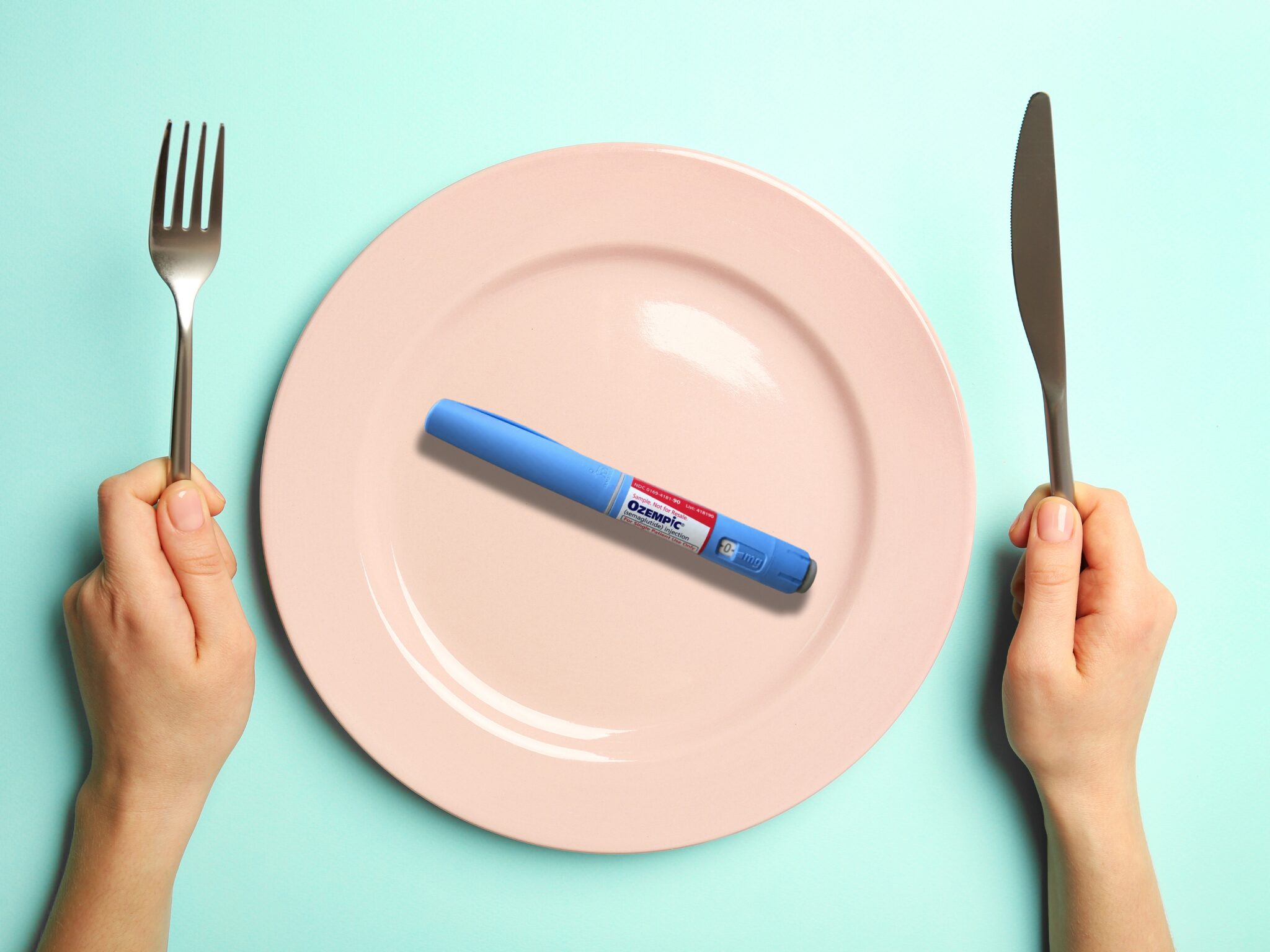
The effects of GLP-1 weight-loss drugs on the food industry continue to be felt, with a new survey revealing that users of medications like Ozempic and Wegovy are spending less money on eating out and ordering takeout.
When Lars Fruergaard Jørgensen, CEO of Ozempic and Wegovy maker Novo Nordisk told Bloomberg that food company execs had been calling him for advice as they were scared about the impact of GLP-1 drugs on their businesses, it felt like a sea change for the industry.
The lines between food and pharma are blurring rapidly – and only one of them is benefitting from this association. In the US, nine million people were prescribed Ozempic, a number that Morgan Stanley analysts say could rise to 24 million in the next decade. This is because Ozempic, a medication for type 2 diabetics, has boomed in popularity after people couldn’t get enough of its weight-loss sister drug Wegovy.
In general, GLP-1 drugs – which also include the likes of Mounjaro, Zepbound and Victoza – are all the rage now. And their impact on how we see food, health and nutrition is unprecedented, and imposing. Morgan Stanley expects the global market for these drugs to reach $105B by 2030 – this is up from its earlier projection of $77B. Its analysts add that more people will be taking these medications, numbering around 31.5 million Americans – or 9% of the US population – by 2035.
Now, a new report by the investment bank has revealed just how GLP-1 drugs are affecting food businesses, with a majority of consumers spending less at restaurants and on takeout, and some reining in their monthly supermarket spend too.
GLP-1 users spending – and eating – less at restaurants

The 300-person survey covered Americans who are early in their weight loss journey but making substantial dietary and budgetary shifts. When asked about their monthly spending on eating out at restaurants since starting on a GLP-1 drug, 63% of respondents said they were spending less, while only 9% were forking out more. Similarly, 61% are spending less on food delivery or takeout as well, with just 8% spending more.
As for grocery shopping, there’s a more even split, perhaps a marker of the cost-of-living crisis. Whereas 46% of Americans are spending about the same as they were before taking GLP-1 medications, 23% are shelling out more, and 31% are putting in less money at supermarkets.
“There is growing evidence that the drugs have a meaningful impact on consumer behaviour and spending on groceries and restaurants,” the analysts said in the survey. “All of these dynamics suggest GLP-1 drugs’ impact across consumer sectors is set to increase as drug uptake grows and the drugs reshape behaviour among a demographic group that represents a disproportionate share of calorie consumption.”
The poll additionally found that people stuck with the same restaurants, but changed the type of meals they ordered. Moreover, 86% of respondents said they finish less food in one sitting while dining out (44% do so always or most of the time). They’re also ordering smaller portions of food – 41% said they do so most or all of the time, and 43% occasionally. This should come as no surprise, given one of GLP-1 drugs’ main attributes is to control appetite; people on these medications generally want and eat less food,
That said, Morgan Stanley’s analysts did note that the rise of GLP-1 drugs is “not an existential risk” to restaurants, but represents a “manageable long-term pressure”. “Restaurants offer convenience and/or experience in addition to food, and that won’t change with GLP-1 usage,” they explained.
Who stands to benefit, and who loses out?

While the survey’s respondents reported reduced food consumption overall, some categories are feeling the effects more than others. Around half of Americans are reducing their consumption of regular sodas, alcohol and salty snacks by 50% or more since starting on weight-loss drugs – in fact, 22% have reported cutting alcohol altogether.
Reflecting on these trends, Morgan Stanley predicts that ice creams will be the most affected food category over the coming years, with a 5.3% dip in consumption by 2035. Cakes, cookies, candies, chocolates, frozen pizzas, chips and regular sodas could fall by more than 4% in this time too, while alcohol, frozen meals, popcorn, pretzels, and crackers face a decrease of roughly 3%. This is why the analysts say Hershey’s, with its extensive snacking portfolio, is the most at-risk CPG company.
This chimes with other research too – a similar survey earlier this year revealed that 32% of consumers are eating fewer snacks, and 36% are drinking less alcohol. Another poll suggested that two-thirds of people have either quit sugary sodas entirely or reduced their consumption. And although alcohol spending has decreased across the US, the decline has been sharper in households with GLP-1 drug users.
But beverage companies say they’re fine. Coca-Cola states that 65% of its revenue already comes from low- or no-calorie drinks, and Pepsi doesn’t think GLP-1 drugs have slowed demand for its drinks. Alcohol giant AB InBev’s CEO Michel Doukeris, meanwhile, has also claimed Ozempic has not impacted the business, though Morgan Stanley said booze companies like Molson Coors, Boston Beer, Constellation Brands and Diageo should be the most worried in the beverage world.
Cigarette companies should be watching this space closely too, with smoking down from 40% to 24% per week, and use of e-cigarettes falling from 30% to 16% for GLP-1 medication users, although Morgan Stanley cautioned against drawing conclusions related to addictive behaviours, and said it was monitoring medical research in this area.

In terms of the foodservice sector, healthier fast-casual restaurants and coffee chains are better positioned to cater to the increase in GLP-1 usage. These include Starbucks, Chipotle, Cava and Sweetgreen. Separate research has shown that Cava and Sweetgreen have seen an increase in footfall from people who start GLP-1 medications, though visits to Chipotle have dropped.
On the contrary, domestic service eateries and more indulgent chains like Jack in the Box, Wendy’s, Wingstop, Portillos, and Shake Shack could face more pressure. The aforementioned research has actually called out the latter for its “lack of history of successfully pivoting to healthier offerings”.
And in terms of retail, pre-packaged fruit juices, soups, sports drinks, coffee, frozen diet meals, tea, granola and energy bars are among the products that will be the least affected by the rise of GLP-1 drugs.
The post Over 60% of Ozempic Users are Spending Less on Restaurants & Food Delivery, Shows New Survey appeared first on Green Queen.
This post was originally published on Green Queen.

